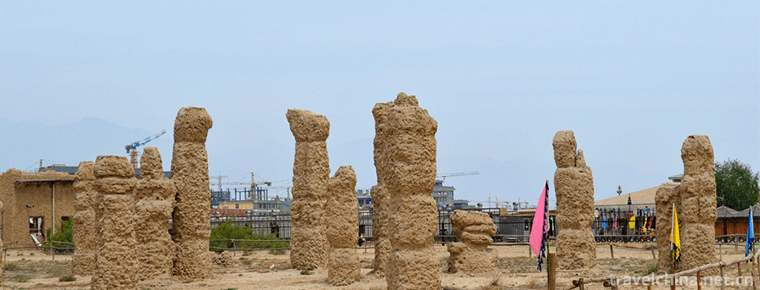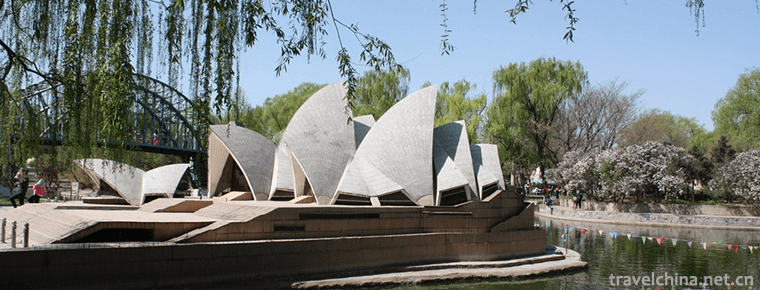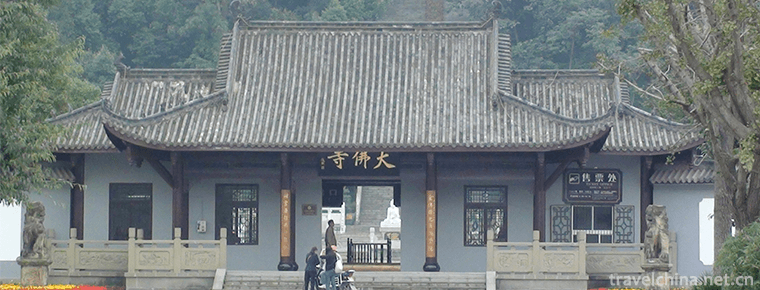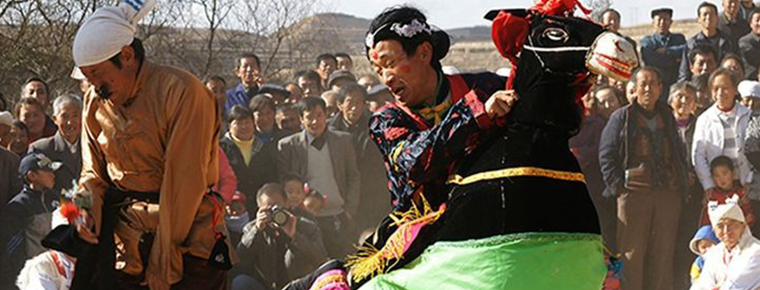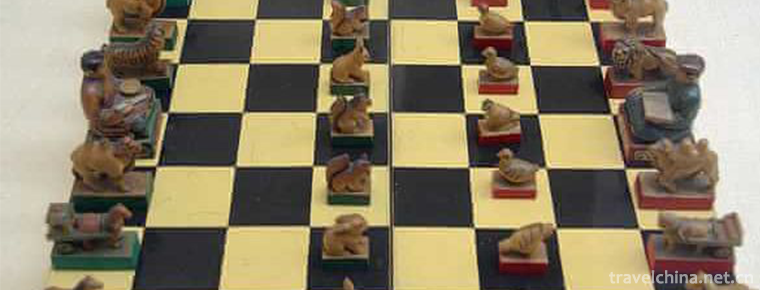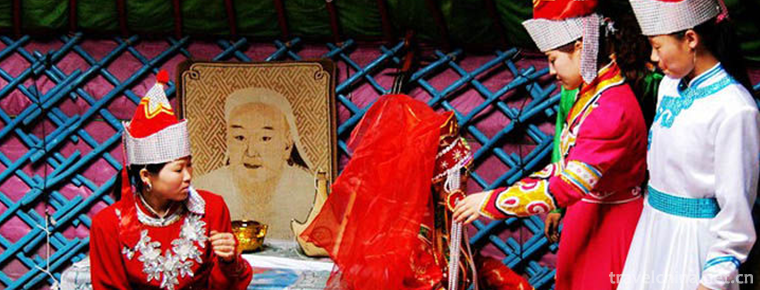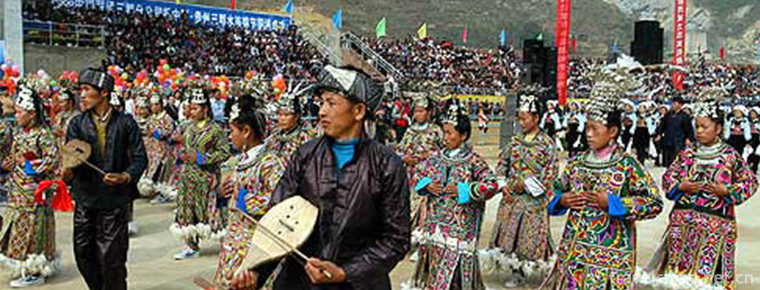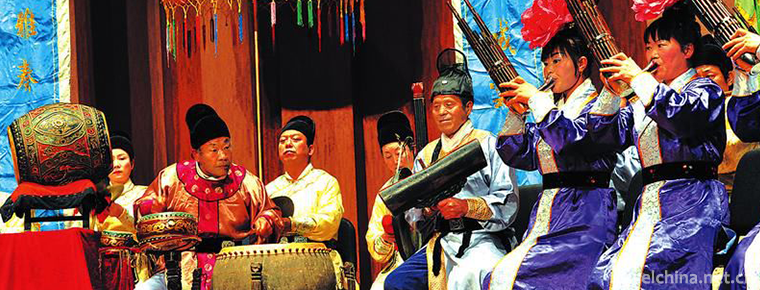The Yellow Dragon Cave huanglong Cave
The Yellow Dragon Cave huanglong Cave
Located in Wulingyuan Scenic Area, the core scenic spot of Zhangjiajie City, Hunan Province, Huanglong Cave is an integral part of the World Natural Heritage Site and Zhangjiajie World Geopark. It is a typical karst karst landform. It is listed as one of the members of international tourist caves, one of the 35 trump spots in the country, the first AAAA-level tourist areas (spots) in China, the first batch of well-known brands of Chinese tourism, and the best tour in Hunan Province. Tourist attractions, famous trademarks of Hunan Province and one of the best tourist lines of Zhangjiajie enjoy the reputation of the world's wonders. In 2005, it was selected as "the most beautiful tourist cave in China". In 2009, Huanglong Cave was selected as "the most beautiful tourist cave in China".
Historical Evolution
Huanglong Cave in Zhangjiajie, also known as Huanglong Spring, is said to have suffered a hundred-day drought during the Qianlong reign of the Qing Dynasty. He Junru, a famous mage, led his disciples into the cave for rain and lost all their lives. He Laoshi left behind a sentence before his death: "Dry death as a gate, do not hit Huanglong Spring". Since then, Huanglong Cave has never been visited.
At the beginning of 1983, Mao Jinchu, a local villager, organized nine militias. After many difficulties and dangers, he finally discovered the truth of the wonders of the world's caves. In February 1984, the Huanglongdong Management Institute was established in June of the same year, and it was officially opened at the end of the year.
In 1997, Huanglongdong was managed by Beijing Datong Company.
In November 1999, the World Aerobic Flight Competition, launched and operated by Huanglongdong Investment Co., Ltd., traveled through Tianmen and broadcasted the world with the name of Huanglongdong.
geographical environment
geographical position
Huanglong Cave is located in the east of Suoxiyu Nature Reserve, Wulingyuan Scenic Spot, the core scenic spot of Zhangjiajie City, Hunan Province. It is 7 kilometers east of Suoxiyu Town (Suoxiyuhekou Village). Zhang-Qing Highway, a high-grade tourist highway, passes through, 36 kilometers away from the urban area of Zhangjiajie, the Lotus Airport of Zhangjiajie, the Zhangjiajie Railway Station and the central bus station of Zhangjiajie, and 30 kilometers away from Changsha-Zhangjiajie Highway.
topographic features
Huanglong Cave is divided into dry cave and water cave. There are four layers, 13 kilometers long, and the highest point is more than 100 meters. It belongs to erosion cave of underground river in limestone. Two-storey water tunnel and two-storey drought tunnel are vertical and horizontal, forming a hole under the hole, spiral structure upstairs, the largest cave hall area of 12,000 square meters, can accommodate tens of thousands of people. There is a reservoir, two Yin rivers, three underground waterfalls, four pools, thirteen halls and ninety-six corridors in the cave. The flow marks, margins, inverted stone buds and inverted pot-shaped caves in the cave are well developed. The calcareous stone deposits are colorful and rich. Dome stone wall dripping water precipitation of milk, pillars, stalagmites, mantle, lyre, stone flowers, such as crystal jade, dazzling, colourful, beautiful, known as the "underground labyrinth".
Development and Utilization
Huanglong Cave has a total area of 100,000 square meters, a total length of 7.5 kilometers, and a vertical height of 140 meters. The cave body is divided into four layers. There are holes in the whole cave. There are rivers in the cave. Stalagmites, pillars, stalactites, all kinds of caves are magnificent and beautiful. According to experts, Huanglongdong area was a vast ocean about 380 million years ago. It deposited strong soluble limestone and dolomite layers. After a long period of time, it began to breed caves. Until the crust uplifted 65 million years ago, dry karst caves appeared. Then through karst and water flow, it formed today's underground wonder. More than 70 experts from the Ministry of Geology of China concluded that the Huanglong Cave is the world's "all-round champion" of the cave because of its large scale, comprehensive content and beautiful scenery.
Main attractions
Survey of scenic spots
Huanglong Cave is characterized by its three-dimensional cave structure, vast Dragon Palace Hall, tens of thousands of stalagmites, tall cave waterfalls and both land and water tourist lines. There are holes and rivers in Huanglong Cave, and various cave landscapes, such as stalactites, stalagmites, pillars, stone flowers, mantles, branches, tubes, stone pearls, stone corals and so on, which are condensed from lime solution, are all over the cave. They are all unique, like an underground "magic palace". Huanglong Cave has high and broad cave sky, deep underground river, suspended waterfalls, dense stalagmites and other high-level tourism resources, with high ornamental value and scientific research value.
Introduction of scenic spots
A lobby
The gathering hall is the smallest of the thirteen halls in Huanglong Cave, with an area of about 6000 square meters. On the opposite side, where there are many stalagmites and lamplight, is the Dragon Stage. It is said that the Dragon King dances. Every year today, the Dragon King holds a grand dance here. On the side of the cliff, there is also a gorgeous box. It is said that the little daughter of the Dragon King and her sweetheart are dating there.
Loud water river
A Yin River in the second floor of Huanglong Cave, the Xiangshui River is 2820 meters long, and it takes about 8 minutes to visit some 800 meters. The average water depth of Xiangshui River is 6 meters, the deepest is 12 meters, and the water temperature is kept at 16 C. It is an ideal living environment for doll fish, which is the key protected animal at the national level. Along the Xiangshui River, there are many wonders in the caves, such as the Golden Helmets of the Dragon King, the floating seashells, the conch blowing, the Yinlong Gorge, the Jiaxiangtai, Tianxianqiao and so on.
Loess high slope
Tianxian Palace is the widest hall in Huanglong Cave. Its north-south width is 96 meters and east-west length is 105 meters. On the right is a huge group of stone waterfalls, 62 meters wide in North and south, 105 meters wide in East and west, with a drop of 40 meters. It is the largest group of stone waterfalls in the tourist caves that have been developed in China. In karst cave science, we call it "underflow rock". It is the secondary calcium carbonate deposit formed by the sheet flow of dripping water at the top of the cave in the process of flowing at the bottom of the cave. Because the top of the cave is thinner and the mud content in the water is higher, the color of the flowing stone waterfall is yellow. Therefore, it is named "Loess High Slope".
Tianxianshui Waterfall
Tianxianshui Waterfall is the largest three springs in Huanglong Cave. It pours down from the 30-meter-high honeycomb-shaped cave roof like smoke, forming a beautiful waterfall spectacle. The four seasons are endless, with a drop of 27.3 meters. There is a real momentum of "flying down three thousand feet, suspected that the Milky Way will fall nine days". On the top of the cave is a high mountain with dense forests. The surface water on the cave converges into a stream and seeps down along the crevice of the cave top, thus forming the Tianxianshui Waterfall.
Flower and fruit hill
Huaguoshan scenic spot is a hall where small dripping stones are relatively developed in Huanglong Cave. Droplets are formed by the precipitation of calcium carbonate saturated solution on the top of the cave during the dripping process, in which stalactites grow from the top down and stalagmites from the bottom up. They grow together in opposite directions and are called pillars. Stalagmites, stalactites and pillars are collectively called stalactites.
Tianzhu Street
Crossing Tianxian Bridge, the largest stone arch bridge in China's tourist caves, we entered Tianzhu Street on the third floor of Huanglong Cave. Tianzhu Street is a street in the sky and a place for fairies to do business. Tianzhu Street is centered on the prosperous and spring-like "Tianjie Market". The pillars and stones of Huaguo Mountain overlap in the West Street, and the dome-shaped cave of the "Paradise Palace" in the East Street is tall and deep. Looking up along the long collapsed slope, two big stone pillars and rubble walls were dissolved by groundwater to form a wonderful void, named "Shiqin Mountain" because of the wonderful and melodious notes that can be tapped from different places. In 1984, when CCTV filmed the TV feature film "Underground Pearl - Huanglong Cave", it was on these two pillars that a complete song "Selling Newspapers" was struck.
Dragon palace hall
The fourth floor "Dragon Palace Hall" on the highest level of Huanglong Cave is 16-30 meters above Huaguoshan and the third floor of Tianzhu Street. Dragon Palace Hall is the largest hall in Huanglong Cave, the oldest hall in Huanglong Cave and the most developed stalagmite hall in tourist caves that have been opened in China. The bottom area is 14000 square meters, the average height of the cave top is 40 meters. There are 1705 stalagmites and pillars, of which 516 are above 1 meter, and the distribution density of stalagmites is 0.12 per square meter. The whole Dragon Palace is magnificent and magnificent. In 1992, when Senior Adviser of the World Natural Heritage Committee came to the Dragon Palace, Sanser commented, "This is the most concentrated and lifelike place I have ever seen in Karst stalagmites. Huanglong Cave deserves to be a wonder of the world's karst caves. It's really amazing.
key stand
In the Dragon Palace, there is a tall and thin stalagmite, which is the "Ding Hai Shen Needle". Its shape is very peculiar. It is 19.2 meters high, its ends are thick, its middle is thin, and its finest point is only 10 centimeters in diameter. The "Dinghai Needle" grows on the collapsed slope and is the tallest Stalagmite in Huanglong Cave. Caveologists estimate that it will take at least 200,000 years for it to grow as high as it is today. The top of "Dinghai Needle" is 6 meters away from the top of the cave, and there is dripping water on the top. It is still between growth and development. It is estimated that it will take 60,000 years to "stand on top of the heaven". As the landmark scenic spot of Huanglong Cave, in order to show the value of "Dinghai Shenzhen Needle" and enhance people's protection consciousness, Huanglong Cave Scenic Area bought 100 million insurance for it in insurance company on April 18, 1998, which set the world's first insurance for resource assets.
Maze
The labyrinth is located at the bottom of Huanglong Cave. There are many kinds of stalactites in the cave. The scenery is very concentrated. The white and crystal stalactites, stalagmites, pillars, mantles, stone flowers, curly stones, stone pearls and stone corals are exquisite and exquisite.
Labyrinth is divided into Dragon Palace, Crystal Palace, Shiqin Mountain, Tianxianshui, Xiangshui River, Labyrinth and other tourist routes. The maze is the essence of Huanglong Cave, covering an area of about 1600 square meters. The "Dragon King's throne" is in the center, surrounded by thousands of pillars and stalagmites. In addition, there are sound stones in the cave. Cave waterfall, the highest 50 meters. Water and mountains in caves, especially mountains in caves, are rare in domestic karst caves.
Tourism information
Sightseeing route
Huanglong Cave Scenic Area Circuit Map: The whole length of Huanglong Cave is 7640 meters, which is divided into four layers. It is a labyrinth-shaped large complex cave system. The second, third and fourth layers of the developed caves account for about half of the whole passageway system. The tour route is 3.2 kilometers long, including more than 800 meters of water tour. The field tour takes 2 hours.
Buy in Huanglong Cave
Huanglong Cave is located in Zhangjiajie native products unique kiwifruit, Qingyan tea, lobster tea, pine fungus. Pueraria lobata powder, fern root powder, rock ear and Eucommia ulmoides tea are called "three treasures and one wonder" in Zhangjiajie.
Playing in Huanglong Cave
In the hole photography service can point out the hole to take photos. There are also two major scenic spots around Huanglong Cave. One is Wulingyuan, a world natural heritage site (Tianzishan, Yuanjiajie, Jinbianxi, Huangshizhai, Yangjiajie and other scenic spots, which are valid for two days). The other is Jiangya Hot Spring, an ecological leisure resort, which takes 30 minutes by car. The third is the ancient city of Phoenix, which takes 4 hours by car.
Eat in Huanglong Cave
The Tujia cuisine in Wulingyuan District of Zhangjiajie, where Huanglongdong is located, is well known. Tujia food is sour, spicy and fragrant. Special dishes include salted pork head, Tuannian dish, blood tofu, mixed dregs, sour fish, loach drilling tofu, black chicken Gastrodia soup, jar dishes, etc. The most popular specialty is the local "three pots".
Living in Huanglong Cave
All large and small hotels in Zhangjiajie mainly distribute in Wulingyuan City, Forest Park and Zhangjiajie City, of which Wulingyuan City and Zhangjiajie City distribute mostly, followed by Forest Park.
Self-driving travelling
There are three different directions for self-driving tour: Hubei self-driving through Hanyi Expressway and Jingdong Expressway into Lixian and Shimen of Hunan Province, and then through Cili County to Huanglongdong, Wuhan to Huanglongdong in about 5 hours; Beijing and Guangdong self-driving through Beijing-Zhuhai Expressway and Changzhang Expressway into Ciliyang and Zhangjiajie City, then through Longyang Highway to Huanglongdong, Changsha to Huanglongdong in about 3 hours. It takes about 4 hours for Guizhou to drive from Tongren, Fenghuang to Jishou, through Zhangluo and Zhangqing high-grade highway to Huanglongdong, and from Fenghuang to Huanglongdong.
Self-help Tour
After arriving in Zhangjiajie by plane or train or car, you can take a taxi directly to Huanglongdong. When you have enough time, you can change to a tourist bus (10 minutes per trip) from Zhangjiajie bus station to Wulingyuan bus station. Then you can change to Wulingyuan City No. 1 bus to Huanglongdong (10 minutes per trip), or you can change to Wulingyuan taxi to Huanglongdong.
Best Tour Time
Huanglong Cave is located in Wulingyuan Scenic Spot, Zhangjiajie core scenic spot in Hunan Province. It belongs to the prototype monsoon humid climate of the middle subtropical mountain. It has abundant light and heat, abundant rainfall, long frost-free period, short cold period, distinct four seasons, no severe cold in winter, no severe summer and heat in summer. The annual average temperature is about 16.6 degrees Celsius. Huanglong Cave is suitable for sightseeing in all seasons. The best time for sightseeing is March-November, spring, summer and autumn. Three seasons are the best, because the temperature inside Huanglong Cave is a little lower than outside, it is suggested not to go in very cold season.
Peripheral attractions
Huanglongdong Ecological Plaza
Located at the entrance of Huanglongdong Scenic Spot, Huanglongdong Eco-Plaza covers 138 mu with a total investment of 200 million yuan. It was designed by Yu Kongjiantanggang, Dean of School of Architecture and Landscape Design of Peking University and Professor of Harvard University.
There are more than 1600 trees and shrubs planted in the ecological square. The turf and greening projects cover nearly 30,000 square meters, which is 61% of the total area of the square. Nearly 20,000 square meters of farmland, concentrated in the southeast of the square, rice, corn and various fruits and vegetables and farmhouses, poultry, peace pigeons integration.
The Tujia Family Courtyard built by mountains and rivers has a total area of 10 826.7 square meters, forming a Tujia architectural complex, which distributes shops, tea houses, hotels and office areas.
Hallelujah Concert Hall
Hallelujah Concert Hall is located at the entrance of Huanglongdong Eco-Plaza. Its building area is 4970 square meters. Huang Yongyu, a famous painter, inscribes the name of the Hall.
The concert hall is adjacent to the Huanglong Cave, backed by the densely vegetated Huanglong Cave mountain, with a greening area of 3000 square meters. It is the largest single slope greening roof in China and the only ecological theater in the world.
The stage and auditorium of the concert hall are 6.5 meters below the horizon and are connected with a branch of Huanglong Cave. The screen of the concert hall is composed of seven groups of 21 LED screens which can be flexible freely. Actors can enter and exit freely on the moving screen. In 2011, the concert hall screen was awarded the Guinness Records as the world's largest three-dimensional, moving screen with the furthest distance.







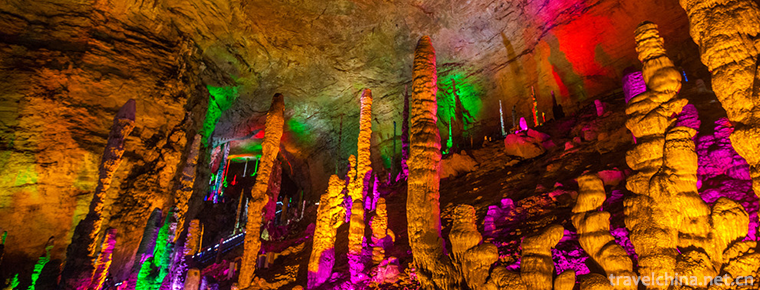
-
Zhenbeibao West Film City
Zhenbeibao Western Film City, located in Yinchuan City, Ningxia Hui Autonomous Region, is a national AAAAA-level tourist attraction integrating sightseeing, entertainment, leisure, catering and shoppi.
Views: 147 Time 2018-12-12 -
World Park
The World Park is located in Dabaotai, Huaxiang, Fengtai District, Beijing. It is 16 kilometers from the city center and 8 kilometers from Beijing West Railway Station. It is a national 4A-level sceni.
Views: 83 Time 2018-12-19 -
Zengjiashan Scenic Area
Zengjiashan Scenic Spot is located in Chaotian District of Guangyuan City, south foot of Qinba and the combination of Sichuan and Shaanxi. It covers 6 townships and townships with 70,000 people.
Views: 132 Time 2019-01-04 -
Big Buddha Cultural Tourist Area in Zigong Rong County
The Dafo Cultural Tourist Area of Zigong Rong County was opened to the outside world in 1982. It covers an area of 32,470 square meters and has a building area of 3,403 square meters. There are a wide.
Views: 199 Time 2019-03-22 -
Hui Nationality Medicine
Hui medicine is the product of the combination of Chinese traditional medicine and Arab-Islamic medicine. Arabs began to develop science and culture when other European countries had not yet separated.
Views: 315 Time 2019-05-04 -
Jingbian donkey
Jingbian Donkey Running, a traditional dance in Jingbian County, Yulin City, Shaanxi Province, is one of the national intangible cultural heritage..
Views: 256 Time 2019-05-08 -
Manchu Ergui wrestling
Ergui wrestling is a traditional Manchu folk dance spread in the urban and rural areas of Longhua County, Hebei Province. It was formed in the late Qing Dynasty (around 1820 A.D.) and flourished betwe.
Views: 102 Time 2019-05-17 -
Shatar Mongolian chess
Mongolian chess is a popular folk sports game in Inner Mongolia. Generally speaking, there are two types of Mongolian chess, one is Shatar with 8 x 8 squares on the chessboard, the other is Hayashatar.
Views: 189 Time 2019-06-03 -
Mongolian Wedding
Mongolian young men and women marry on auspicious days, and men give gifts to women's homes. The gifts include cash, clothes, cloth, jewelry, rice and so on. There are cabinets, bedding, clothes, jewe.
Views: 141 Time 2019-06-03 -
Shuizu Duanwu Jie
The aquarium duanjie is called "borrowing duanjie" in the language of water. "Duan" means "the first year of life" or "New Year", "borrow" means ".
Views: 165 Time 2019-06-16 -
Xi an Drums Music
Xi'an drum music, also known as Chang'an ancient music. It is a large-scale traditional folk drum music spread in Xi'an (ancient Chang'an) and its surrounding areas for thousands of years. It originat.
Views: 194 Time 2019-06-30 -
Guangan economy
In 2019, the GDP of Guang'an City will reach 125.04 billion yuan, an increase of 7.5% over the previous year (the same below). Among them, the added value of the primary industry was 20.43 billion yuan, an increase of 2.8%; the added value of the secon.
Views: 355 Time 2020-12-19
